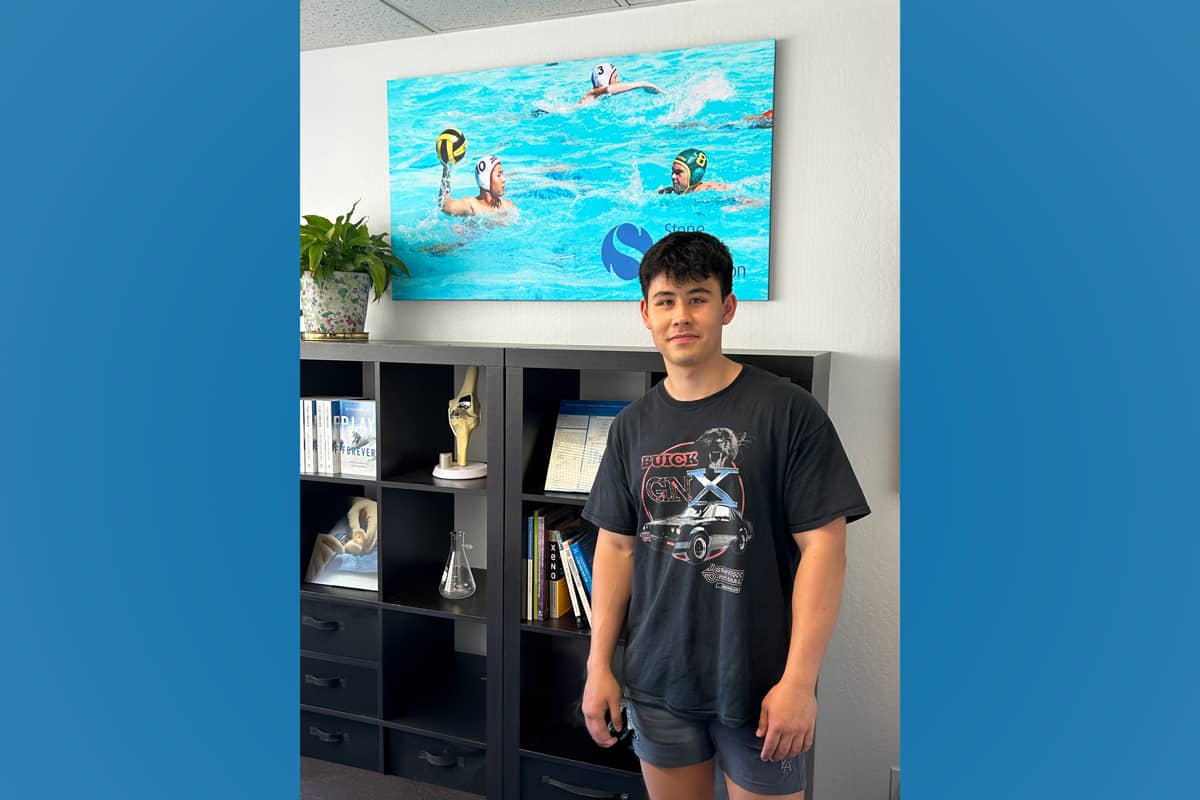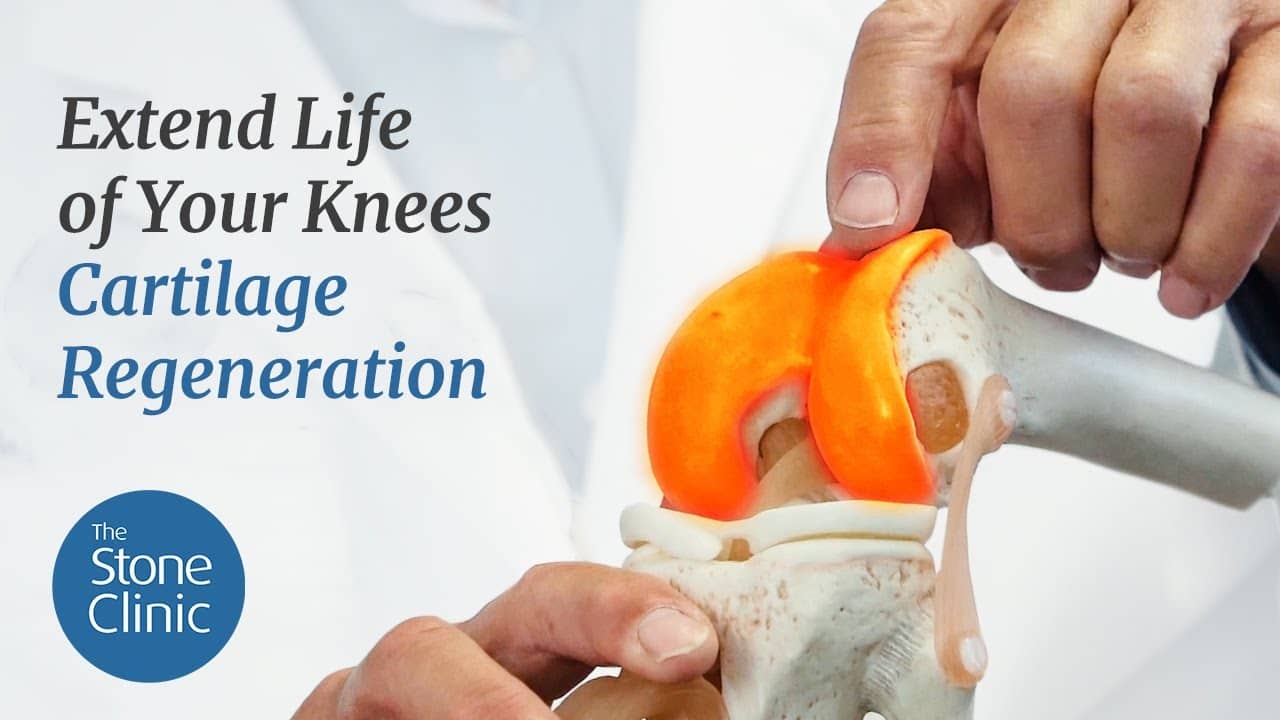Cartilage Lesions in Kids
Damage to the articular cartilage in kids most often shows up in middle and high school. Here is an update.

Articular cartilage repair patient George C. with photo art capturing his return to water polo after undergoing an articular cartilage paste graft procedure.
The articular cartilage is the bearing surface on the ends of bones in all joints. When injured in kids, the same questions always come up: Was this a genetic or pre-existing injury, or new trauma? Will it heal on its own? Is surgery best done immediately or will they grow out of it? If surgery is called for, which procedure?
The most common case we see is a child, most often a boy, with persistent knee pain after a relatively minor injury. The X-ray and MRI reveal a lesion in the bone, underlying a layer of apparently healthy but sometimes separated articular cartilage. This presentation is consistent with osteochondritis dissecans, a disease where either (a) the blood flow to the bone is abnormal or (b) genetic factors during development have led to this area of apparently dead bone. No one knows the exact origin of the disease. The pain starts after the “mild” injury, which most likely loosens the cartilage over this dead bone area.
Treatment depends on the stage of the lesion. Early stages may either heal on their own or progress. These diagnoses are initially followed with exercise modification and pain control. Unfortunately, the reduction in activities and sports participation is difficult for kids to accept.
More significant lesions are often best treated with surgery. The options are:
- Articular cartilage removal and drilling of the underlying bone. This rarely works well.
- Articular cartilage repair with pins and screws to establish a stable cartilage cover. Unfortunately, as the underlying bone is diseased the healing rate is unpredictable.
- Cell-based grafting of the damaged area. The most common graft was called ACI and is now augmented by a matrix called MACI. This has good results as reported in the literature.
- Articular cartilage plugs. It involves removing the lesion and filling it with a plug of bone and cartilage. Unfortunately, there are no unnecessary areas of the knee joint that are large enough to provide the bone and cartilage necessary to replace the diseased areas.
- Artificial plugs of a porous bi-phasic scaffold, consisting of inorganic calcium carbonate (called Agili-C). There is little data about using this procedure in children.
- Articular cartilage paste grafting. This is our preferred technique. We create a fresh fracture within the diseased bone, then apply a paste of articular cartilage and bone harvested from the intercondylar notch (part of the femur), which regrows naturally.
Our bias is to use the paste graft technique as it does no harm, can always be re-done if healing is inadequate, and has worked well in our hands for more than thirty years in both small and very large lesions1.
The addition of growth factors, stem cells, and other anabolic therapies has not made much of a difference in children as they naturally have an abundance of these factors.
How the Paste Graft Technique Helped Our Teen-Athlete Patient Overcome Arthritis

The treatment is the same for cartilage lesions from acute trauma which, fortunately, is relatively rare in kids. Kids will dislocate their patella, rupture their enteric cruciate ligaments, and tear their meniscus cartilages far more often than damaging their articular cartilage — unlike their parents.
The tragedy for many of the children we see is that they have been told to rest their knees after developing a cartilage lesion, and thus have often lost years of potential sports participation. For kids, especially, it is often better to repair the damage early than to hope they will grow out of it. The years of youth and active sports participation don’t wait.
Citation:
1Stone KR, Walgenbach AW, Slatter S, Turek TJ, Ferguson-Dryden C, Dicker M, Miltenberger E, Cowles H, Liu V, Wu S, Vessal M. "Meniscus Allograft Transplantation in Conjunction With Arthroscopic Biologic Knee Restoration Delays Arthroplasty in Patients Older Than 50 Years." Arthroscopy. 2024 Jun 17:S0749-8063(24)00418-3. doi: 10.1016/j.arthro.2024.06.008. Epub ahead of print. PMID: 38897483.


